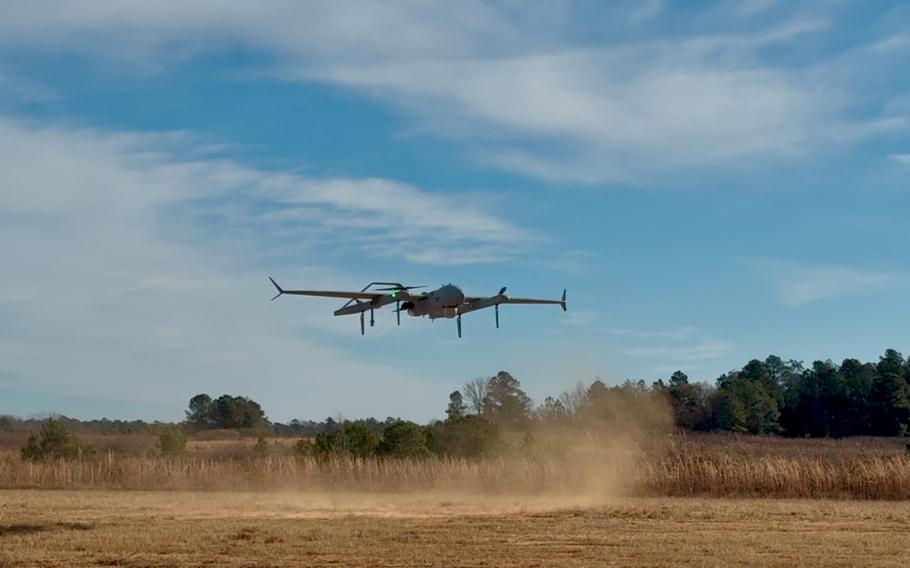
The Army has taken delivery of the Textron Systems MK 4.8 HQ Aerosonde drone prototype. (U.S. Army)
The Army has a surveillance drone prototype that when fielded will give brigade commanders a clearer picture of the battlefield terrain where soldiers are maneuvering, the service said this month.
The unmanned aircraft was delivered to the Army after two years of development and testing. A training phase is expected to be completed by the end of January.
The Army then will evaluate production proposals for its Future Tactical Uncrewed Aircraft Systems, with awards anticipated by the end of 2025, the service said in a Dec. 20 statement.
The program “will provide brigade combat teams with an organic capability for reconnaissance and surveillance operations, enabling them to collect, develop, and report actionable intelligence,” the Army statement said.
The system could be fielded as soon as 2026.
Incorporating an array of drones into combat formations has been a focal point for the Army in recent years as it looks for ways to give its ground forces an advantage on modern battlefields.
While sophisticated drones have been part of the U.S. military’s arsenal for decades, the Russia-Ukraine war has highlighted how relatively simple unmanned systems can be put to effective use by junior soldiers in small units.
At Army training centers, soldiers have been busy working with both hand-held drones and more advanced systems.
For example, U.S. troops training in Romania in November were the first to try out a pair of drone systems designed for infantry and scout platoons on dismounted patrols. Those drones give ground troops a better view of the immediate area.
The prototype delivered to the Army in December is focused on the bigger picture, enabling commanders to “maintain dominance during multi-domain operations,” the Army said.
The system is known as the MK 4.8 HQ Aerosonde and was developed by Textron Systems. It has a variety of features sought by the Army, including vertical take-off and landing capabilities.
The Textron Systems prototype is competing with a similar model developed by Griffon Aerospace, with the Army set to make a final decision on which model it wants in 2025.